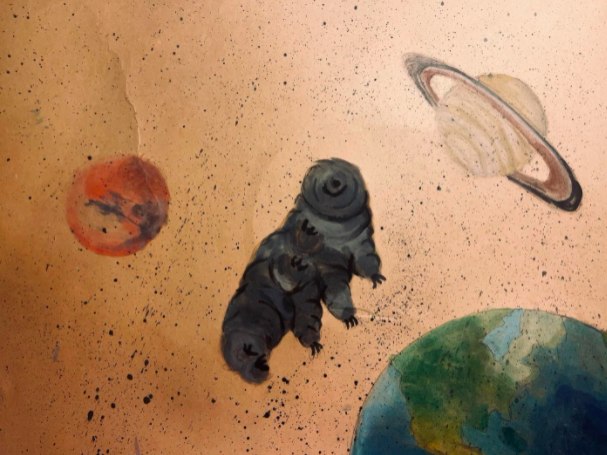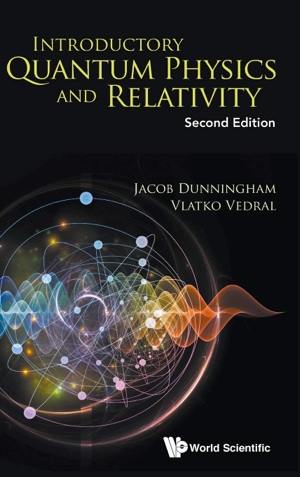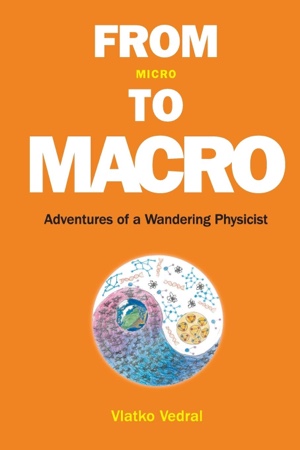Entangled Tardigrades
Some creatures never say die. I’ve recently read an article about a bunch of tardigrades – aka “slow steppers”, in which the author described how tardigrades were sent to outer space attached to a rocket to test their robustness. During most of their journey the conditions in outer space were highly inhospitable: there is no air out there and the temperatures are less than 3 Kelvin (about hundred times lower than in your living room). But they returned to Earth intact. Not only that, there was more of them upon return then on takeoff! (They had actually managed to multiply in these adverse conditions).
Tardigrades have evolved an ingenious strategy enabling them to “switch on” a state of completely suspended animation. In this state, formally known as tun, their body dries out and appears as a lifeless ball. The metabolism is known to plummet to as little as a hundredth of a percent of its normal rate. Tardigrades can survive as tuns for decades because their energy consumption is really minimal. (Anyone interested in combating the global warming might want to take note).
The incredible resilience of tardigrades gave a couple of colleagues of mine a mind-blowing idea. Rainer Dumke of CQT in Singapore and Tomek Paterek of the University of Gdansk already collected the biology IgNobel Prize a couple of year ago for studying the magnetic response of cockroaches. That work was within classical physics. Now, however, they thought of doing something even more exciting, namely fusing tardigrades with quantum computers (this is what physicists think of as “exciting”).
For the past five years or so, Rainer has been building a superconducting qubit based approach to quantum technologies. In order to make his qubits stable, Rainer needs to cool his superconductors down to miliKelvin temperatures (that is a thousand times cooler than the outer space and ten thousand times than your living room). Could tardigrades survive this interaction with supercool qubits?
The answer is yes. And, not only do they survive low temperatures, but they also survive the weirdest of all quantum effect, entanglement.
This is where I come in. Entanglement is a bizarre quantum state arising between two systems when they interact. When they are in this state, the systems lose their individuality and can only be thought of as one quantum whole. I’ve studied this effect for most of my career as it is key to unlocking all the secrets of quantum physics. When I started out some 30 years ago, people could entangle two photons at most or two atoms. Then, we’ve witnessed a huge progress towards the macro domain in which larger and larger objects (Bucky balls and some other biomolecules) were shown to be capable of quantum behaviour. My friend Dave Coles even put a living bacterium into an entangled state with light!
Rainer’s experiment is the latest in this line of research. The fact that the tardigrade and the superconducting qubit are entangled is manifested in a lower energy state they can achieve jointly than either of the two can on their own – this is precisely because they are entangled. The lower energy is precisely what Rainer’s group measured. But they went much further. They managed to prepare arbitrary superpositions of this hybrid qubit as well as entangle it to yet another superconducting qubit.
This is a very exciting result for physics as it pushes quantum mechanics even further into the macro domain. However, it is also interesting to a biologist, such as our collaborator Nadja Møbjerg of the University of Copenhagen, as Rainer’s experiments demonstrate new record breaking low temperatures (and pressures, which were during the experiment about a million times smaller than on Earth) that tardigrades are able to survive.
About a thousand tardigrades have been stuck on the Moon since 2019 after an Israeli rocket carrying them crash-landed there. Most scientists believe that the tardigrades are still alive and kicking (in case you asked, we named the tardigrade who survived Rainer’s experiment Neil Wormstrong). Does quantum physics play any significant role in being able to survive extreme conditions? And could their phenomenal survivalist makeup give us a clue about how to colonise other planets?

An artist’s impression of Neil Wormstrong (c) Mia Vedral
While it may take us some time to understand all these big questions one thing is already clear to me. I feel privileged and lucky to be part of this wonderful collaboration and hope that more is soon to come.
Sign up to my substack if you'd like to have my articles delivered straight to your inbox
ASK ME ANYTHING!
If you'd like to ask me a question or discuss my research then please get in touch.





